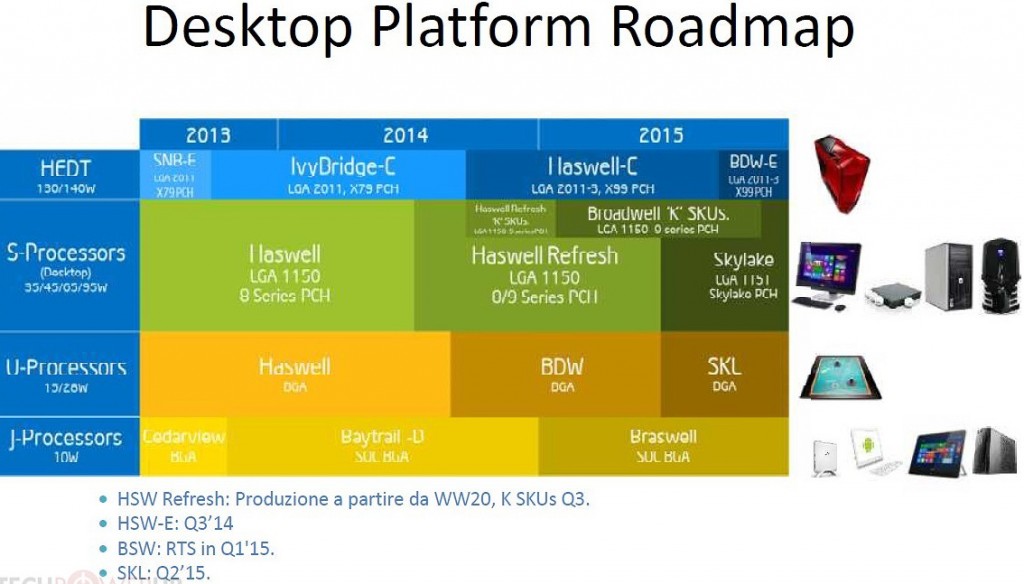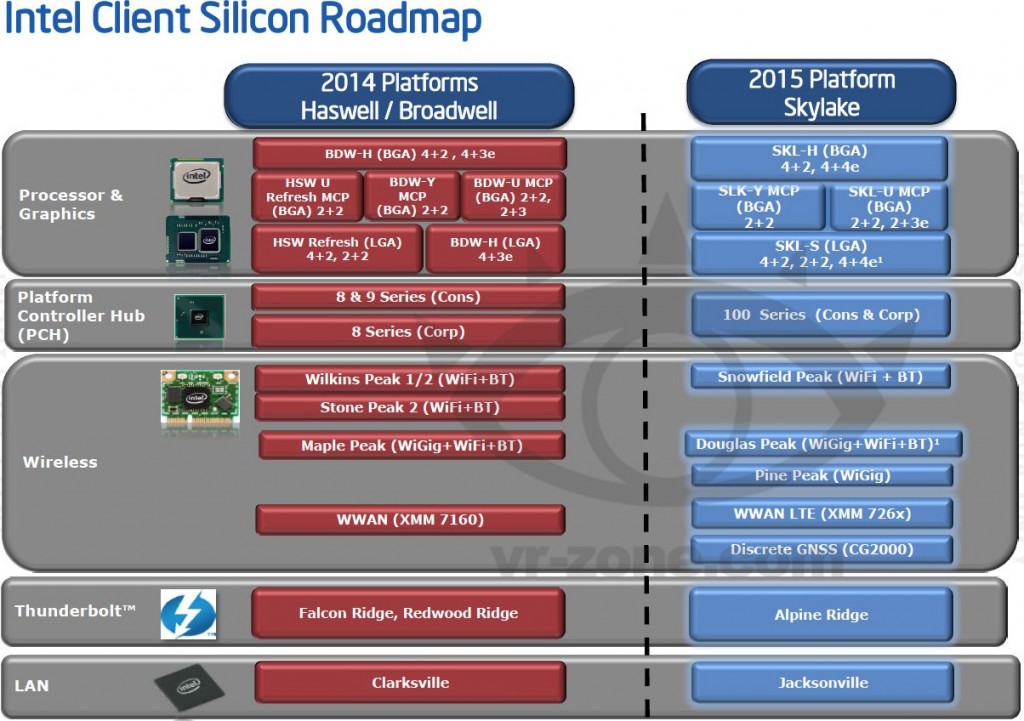A desktop platform roadmap that Intel Corp. had reportedly demonstrated at a conference in Italy has been published by an unofficial source. A slide from the roadmap confirms that Intel intends to release both code-named “Broadwell” and “Skylake” microprocessors for desktops next year. In addition, the company intends to release its future high-end desktop chips code-named “Broadwell-E” in the second half of 2015.
Just as reported previously, Intel will be rather busy next year, at least when it comes to new desktop central processing units (CPUs). According to the slide from the roadmap, which Intel reportedly demonstrated at the 3D Revolution 2014 conference in Rome earlier this year, the world’s largest chipmaker plans to offer its new enthusiast-class unlocked “Broadwell-K” chips in 2015, release its “Skylake” microprocessors for mainstream systems sometimes in the second quarter of 2015, start to sell its all-new low-cost/low-power Braswell processors early in the year and unleash its Core i7 Extreme “Broadwell-E” microprocessors for high-end desktops (HEDTs) in the third quarter of 2015. The slide was published by TechPowerUp.
Back in late May it was reported that Intel would start to roll-out the “Broadwell-K” unlocked chips for mainstream enthusiasts only in May or June, 2015. Now it looks like the next-gen unlocked microprocessors will arrive a little sooner, but will still be followed by the “Skylake” central processing units, which will have their own advantages (such as higher-performing integrated graphics core). Moreover, if the slide is to be believed, then the “Broadwell-K” products will have a relatively short life as they will be replaced by the new breed of chips (presumably by the “Skylake-K” unlocked CPUs) either before the end of 2015, or early in 2016.
It should be noted that while the “Skylake”- and the “Broadwell”-based desktop platforms will co-exist on the market for quite some time, the former will be considerably more advanced than the latter. The Skylake microprocessors will use the LGA1151 packaging and will be supported by Intel’s 100-series core-logic sets, which will likely bring support for the USB 3.1. Mainboards for the “Skylake” microprocessors will feature, among other things, optional Thunderbolt 3.0 40Gb/s, WiGig 7Gb/s and other advanced technologies.
As expected, Intel will continue to offer BGA [ball grid array] versions of its chips for desktops. Those, who do not need upgradeability, but prefer small form-factors will be able to choose from the “Broadwell”, the “Skylake”, and the “Braswell” microprocessors next year.
All the chips that Intel will introduce in 2015 will be made using 14nm process technology.
Intel did not comment on the news-story.
Discuss on our Facebook page, HERE.
KitGuru Says: It looks like Intel does not want to give up its Tick-Tock strategy, which is why the Skylake processors will be released essentially simultaneously with the Broadwell chips on the desktop market. Generally, this may indicate that the 10nm process technology and the Airlake/Cannonlake chips are on-track for production in 2016. The only question is how will the market react on this? Mainboard makers do not like to compete against themselves, whereas the LGA1150 and the LGA1151 platforms will probably compete against each other.
 KitGuru KitGuru.net – Tech News | Hardware News | Hardware Reviews | IOS | Mobile | Gaming | Graphics Cards
KitGuru KitGuru.net – Tech News | Hardware News | Hardware Reviews | IOS | Mobile | Gaming | Graphics Cards




